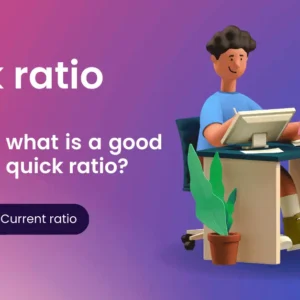What is continuous improvement?
Continuous improvement, also known as continual improvement, is an ongoing process of making incremental changes and enhancements to achieve better results over time. It involves a systematic approach to identifying areas for improvement, learning from experiences, and implementing changes to optimize products, processes, and services.
The philosophy of continuous improvement emphasizes the importance of constantly seeking opportunities for enhancement, encouraging employee involvement, and fostering a culture of innovation and learning within the organization. By continuously striving for improvement, organizations can enhance efficiency, productivity, quality, customer satisfaction, and overall performance.
It is a key principle in various management methodologies, such as Lean, Six Sigma, and Total Quality Management, and is instrumental in driving organizational success and maintaining a competitive edge in today’s dynamic business environment.
Types of continuous improvement
Kaizen:
Kaizen is a Japanese term meaning “change for the better” or “continuous improvement.” It involves making small, incremental improvements in all aspects of an organization’s operations, intending to enhance efficiency, reduce waste, and continuously improve processes.
Lean:
Lean principles focus on eliminating waste and improving efficiency in processes. It involves identifying and eliminating activities that do not add value, streamlining workflows, and optimizing resources to improve productivity and customer satisfaction.
Six Sigma:
Six Sigma is a data-driven approach that aims to reduce defects and variation in processes. It involves rigorous statistical analysis and problem-solving techniques to identify and eliminate causes of defects, resulting in improved quality and customer satisfaction.
Total Quality Management (TQM):
TQM is a management approach that emphasizes the involvement of all employees in continuously improving quality. It focuses on customer satisfaction, employee engagement, and process improvement through systematic methods like process mapping, benchmarking, and continuous measurement.
Agile:
Agile methodologies, commonly used in software development, promote iterative and incremental development. It involves breaking down projects into smaller, manageable tasks, regularly evaluating progress, and making adjustments based on feedback, resulting in faster and more flexible product development.
Continuous Process Improvement (CPI):
CPI is a general term that encompasses various improvement approaches focused on enhancing processes and operational efficiency. It involves analyzing processes, identifying bottlenecks, and implementing changes to improve productivity, quality, and customer satisfaction.
Benefits of continuous improvements
- Increased Efficiency: By continually seeking and implementing improvements, organizations can enhance their processes, eliminate waste, and optimize resource utilization. This leads to increased efficiency and productivity, enabling organizations to accomplish more with fewer resources.
- Enhanced Quality: Continuous improvement methodologies emphasize the identification and elimination of defects and errors. By focusing on quality improvement, organizations can deliver products and services that meet or exceed customer expectations, leading to improved customer satisfaction and loyalty.
- Cost Control: Continuous improvements often lead to cost control through waste reduction, streamlined processes, and improved resource utilization. By identifying and eliminating inefficiencies, organizations can reduce operational costs and enhance their bottom line.
- Competitive Advantage: Organizations that prioritize continuous improvement stay ahead of the competition. By continuously refining their processes, products, and services, they can differentiate themselves in the market, deliver higher value to customers, and gain a competitive edge.
- Employee Engagement and Satisfaction: Involving employees in the continuous improvement process fosters a sense of ownership, empowerment, and engagement. When employees contribute their ideas and see the positive impact of their suggestions, it boosts their motivation, job satisfaction, and overall morale.
- Innovation and Adaptability: Continuous improvement encourages a culture of innovation and adaptation. By constantly seeking ways to improve, organizations become more flexible and better equipped to respond to changing market demands and customer needs.
- Learning Organization: Continuous improvement fosters a learning mindset within the organization. It promotes knowledge sharing, experimentation, and continuous learning from both successes and failures. This culture of learning enables organizations to stay agile, innovate, and adapt to new challenges and opportunities.
How to apply continuous improvement
- Establish a Culture of Improvement: Foster a culture that encourages all employees to contribute ideas and suggestions for improvement. Create an environment where learning, innovation, and collaboration are valued.
- Identify Improvement Opportunities: Regularly assess processes, systems, and workflows to identify areas for improvement. Seek input from employees, customers, and stakeholders to gather diverse perspectives and insights.
- Set Clear Goals and Metrics: Define clear improvement goals and establish measurable metrics to track progress. Ensure that the goals align with the organization’s overall objectives and strategic priorities.
- Analyze Current State: Analyze the current state of processes or systems to understand their strengths, weaknesses, and bottlenecks. Use tools like process mapping, value stream analysis, or root cause analysis to identify areas for improvement.
- Generate Improvement Ideas: Encourage employees to generate improvement ideas and solutions. Implement brainstorming sessions, suggestion programs, or cross-functional teams to foster creativity and collaboration.
- Prioritize and Implement Changes: Evaluate and prioritize improvement ideas based on their potential impact, feasibility, and alignment with organizational goals. Develop action plans to implement the selected changes, ensuring clear responsibilities and timelines.
- Monitor and Measure: Continuously monitor and measure the impact of implemented changes. Track key performance indicators (KPIs) and collect data to assess the effectiveness of the improvements. Use this data to identify further opportunities for refinement.
- Encourage Continuous Learning: Foster a culture of continuous learning and knowledge sharing. Encourage employees to reflect on their experiences, share lessons learned, and apply those insights to future improvement initiatives.
- Communicate and Celebrate Success: Regularly communicate the progress and achievements related to continuous improvement efforts. Recognize and celebrate successes to motivate and engage employees and reinforce the value of ongoing improvement.
- Iterate and Repeat: Continuous improvement is an iterative process. Review and refine the implemented changes, learn from the outcomes, and repeat the cycle to continuously enhance processes, products, and services.
Step-by-step procedures for continuous improvements
Establish a Culture of Improvement:
Create an organizational culture that values and encourages continuous improvement. Foster open communication, collaboration, and employee engagement to promote a proactive mindset toward identifying and implementing improvements.
Identify Improvement Opportunities:
Regularly assess processes, systems, and practices to identify areas that can be improved. Gather feedback from employees, customers, and stakeholders to gain diverse perspectives and insights.
Set Clear Objectives:
Define clear improvement objectives that align with the organization’s strategic goals. Ensure that the objectives are specific, measurable, achievable, relevant, and time-bound (SMART).
Analyze Current State:
Analyze the current state of the processes or systems that need improvement. Use tools such as process mapping, value stream analysis, or data analysis to identify inefficiencies, bottlenecks, or areas for enhancement.
Generate Improvement Ideas:
Encourage employees to generate improvement ideas and solutions. Conduct brainstorming sessions, suggestion programs, or cross-functional workshops to gather a wide range of ideas and perspectives.
Evaluate and Prioritize:
Evaluate the potential impact, feasibility, and resource requirements of the improvement ideas. Prioritize the ideas based on their alignment with organizational goals and the expected value they can deliver.
Develop Action Plans:
Create detailed action plans for implementing the selected improvement ideas. Clearly define the tasks, responsibilities, timelines, and resources required for each action. Assign accountable individuals or teams for effective execution.
Implement Changes:
Execute the action plans and implement the identified changes or improvements. Ensure effective communication, training, and support to facilitate smooth implementation and minimize resistance.
Monitor and Measure:
Continuously monitor the implemented changes and measure their effectiveness. Establish key performance indicators (KPIs) to track progress and assess the impact of the improvements. Collect data and feedback to evaluate outcomes.
Review and Learn:
Review the results and learn from the implemented improvements. Identify successes, challenges, and lessons learned. Share and disseminate these insights within the organization to foster continuous learning and improvement.
Adjust and Iterate:
Based on the review and learning, make necessary adjustments and refinements to further enhance the implemented changes. Iterate through the improvement cycle to continually refine processes, products, and services.
Challenges in continuous improvements
Implementing continuous improvement initiatives can come with several challenges. Here are some common challenges organizations may face:
Resistance to Change:
One of the primary challenges is resistance to change from employees or stakeholders. People may be reluctant to embrace new ways of doing things, resulting in resistance or lack of support for improvement initiatives. Overcoming resistance requires effective change management strategies and clear communication about the benefits of the proposed changes.
Lack of Resources:
Continuous improvement requires resources, including time, budget, and personnel. Limited resources can hinder the implementation of improvement projects and initiatives. Organizations need to allocate adequate resources and prioritize improvement efforts to ensure their success.
Lack of Focus or Clarity:
Without a clear focus or direction, continuous improvement efforts can become scattered or lack purpose. Lack of clarity in improvement objectives, priorities, or processes can hinder progress and impact the effectiveness of improvement initiatives. Clearly defining improvement goals and ensuring alignment with organizational objectives is crucial.
Ineffective Measurement and Tracking:
Measuring and tracking the impact of improvement initiatives is essential for evaluating success and sustaining continuous improvement efforts. However, organizations may face challenges in establishing effective measurement systems, defining meaningful metrics, or collecting accurate data. Without proper measurement, it becomes challenging to assess progress and identify areas for further improvement.
Sustaining Momentum:
Continuous improvement is an ongoing process that requires sustained effort and commitment. Maintaining the momentum of improvement initiatives over the long term can be challenging, particularly when other operational priorities or external factors take precedence. Organizations need to establish mechanisms to sustain the focus on improvement and foster a culture of continuous learning.
Siloed Approach:
Collaboration and cross-functional engagement are crucial for successful continuous improvement. However, organizations may face challenges when different departments or teams operate in silos, hindering effective communication and coordination. Breaking down silos and promoting collaboration across the organization is essential to leverage diverse perspectives and drive holistic improvements.
Lack of Leadership Support:
Without strong leadership support, continuous improvement efforts may struggle to gain traction. Leaders need to actively champion improvement initiatives, provide resources and guidance, and set an example by embracing a continuous improvement mindset. Leadership commitment is vital to overcome challenges and create an environment conducive to ongoing improvement.





[…] their financial goals, maintain competitiveness, and drive long-term sustainability. It is a continuous improvement […]
[…] goals encourage a culture of continuous improvement. By regularly reviewing and reassessing goals, organizations can identify opportunities for growth, […]
[…] Continuous improvement and efficiency are core focuses of lean manufacturing. The principle of continuous improvement, also known as Kaizen, emphasizes the ongoing effort to identify and implement incremental improvements in all aspects of the manufacturing process. This includes empowering employees to suggest and implement changes, regularly reviewing and analyzing performance data, and fostering a culture of learning and innovation. […]
[…] a culture of continuous improvement in risk management. Encourage feedback from employees, suppliers, and other stakeholders regarding […]
[…] Continuous Improvement: […]
Your point of view caught my eye and was very interesting. Thanks. I have a question for you.